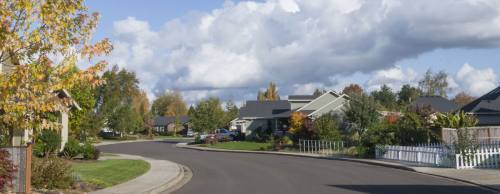Forthcoming Apple campus in Northwest Austin raises concerns about housing supply
Apple announced Dec. 13 it will build a second Austin campus at Robinson Ranch.
Apple's Dec. 13 announcement it will open a second campus at Robinson Ranch in Northwest Austin and hire as many as 15,000 employees to work there raises questions about whether the city’s infrastructure—including its housing supply—is prepared.
While demand continues to outpace supply in Austin’s real estate market, Austin Board of Realtors President Steve Crorey said the Northwest Austin area is “primed” for the arrival of the new Apple campus and better positioned to absorb thousands of new employees than downtown, for example.
Concerns remain, however.
“If we don’t get serious about our infrastructure, our traffic, putting [more diverse] product on the ground for everyone, we’re going to lose businesses like this,” Crorey said, adding that Apple’s second campus presents an opportunity for city leaders to address these issues in a meaningful way.
Effect on the housing market
Austin’s surrounding communities are likely to see a spillover of new Apple employees buying households or filling rental properties, according to several local Realtors.
“Austin proper does not have a ton of land left to develop new homes,” said Cindi Bell, president-elect for the Williamson County Association of Realtors.
Per Bell, communities such as Round Rock, Pflugerville and Hutto will be hubs to keep an eye on because of their connectivity to the Robinson Ranch area via SH 45. New development is also likely hit Leander and Liberty Hill, and possibly as far north as Jarrell, if the I-35 corridor becomes an attractive option for incoming Apple employees.
Essentially Williamson County has far more room to continue developing communities and rooftops than Austin, Realty Texas Realtor Suzanne Gantner said. Affordability and availability themselves may drive more incoming residents to Austin’s suburbs out of sheer necessity.
“If you’re wanting to buy something in the Austin area the affordability right now is just crazy. First-time homebuyers … in that area are looking at $400,000 or more,” Gantner said. “You come out to Williamson [County] you can get twice [the size] for about $250,000.”
So what does that do for property values in Austin’s surrounding suburbs? Per the Austin Board of Realtors’ latest report, median prices for all homes in Round Rock have risen 7.3 percent year-over-year, more than Austin’s increase of 4.1 percent. Pflugerville and Leander have seen median prices climb by 3.4 percent and 5.4 percent, respectively.
Bell expects the neighborhoods surrounding the new Apple campus site—such as Avery Ranch or Brushy Creek—to quickly become attractive “flipping” properties.
However, new home construction helps offset increasingly climbing property values by creating more balance in the market, per Bell.
“You just need more rooftops. It can’t just be done by resale—and Williamson County has the land,” Bell said.
But the Austin-Round Rock metropolitan statistical area has a low inventory of homes available at any given point. The area collectively has 2.9 months of inventory as of October. In Round Rock alone that number dips to 1.9 months of inventory, according to ABoR data.
Gantner said 6 months of inventory, or the amount of time all homes on the market would last should no more be added, is considered a healthy, normal amount.
That means if new households are to help suppress inflating home values, more rooftops need to be delivered before the next possible influx of homebuyers in Williamson County.
Company concerns
Scott Turner, owner of Riverside Homes and chairman of the Infill Builders Council at the Home Builders Association of Greater Austin, said while new jobs are good for the local economy they may add additional strain to a housing market already struggling to meet demand.
“Companies have to factor this into their plans,” Turner said.
Apple has not announced any plans to subsidize housing for its Austin employees, as other technology companies such as Oracle have done.
“From a homebuilding standpoint this [announcement] really illustrates the need for land-use reform,” Turner said. “Until we are able to build more types of housing everywhere in Austin at every price point, the next time a company like Apples tries to expand they will have to think twice because they won’t have anywhere to house their workforce.”
Past examples
Other cities provide examples of the impact such an arrival can have on the local real estate market.
Following the announcement Apple would open a new campus in Cupertino, California, Realtor.com analyzed its impact on area home sales.
Just before the Apple Park campus opened in April 2017, median home prices in Cupertino rose 54.7 percent, to $1,535,000, according to its analysis.
Since then, median home prices within one mile of the new campus have jumped another 31.6 percent, up to $2,020,000, per Realtor.com.
In Seattle the growth of Amazon’s workforce locally has corresponded with rising home prices. The Seattle Times reported in November since 2010, when the tech giant began adding tens of thousands of new jobs to the local economy, home prices in the city have increased 80 percent, and rents have increased 69 percent.




